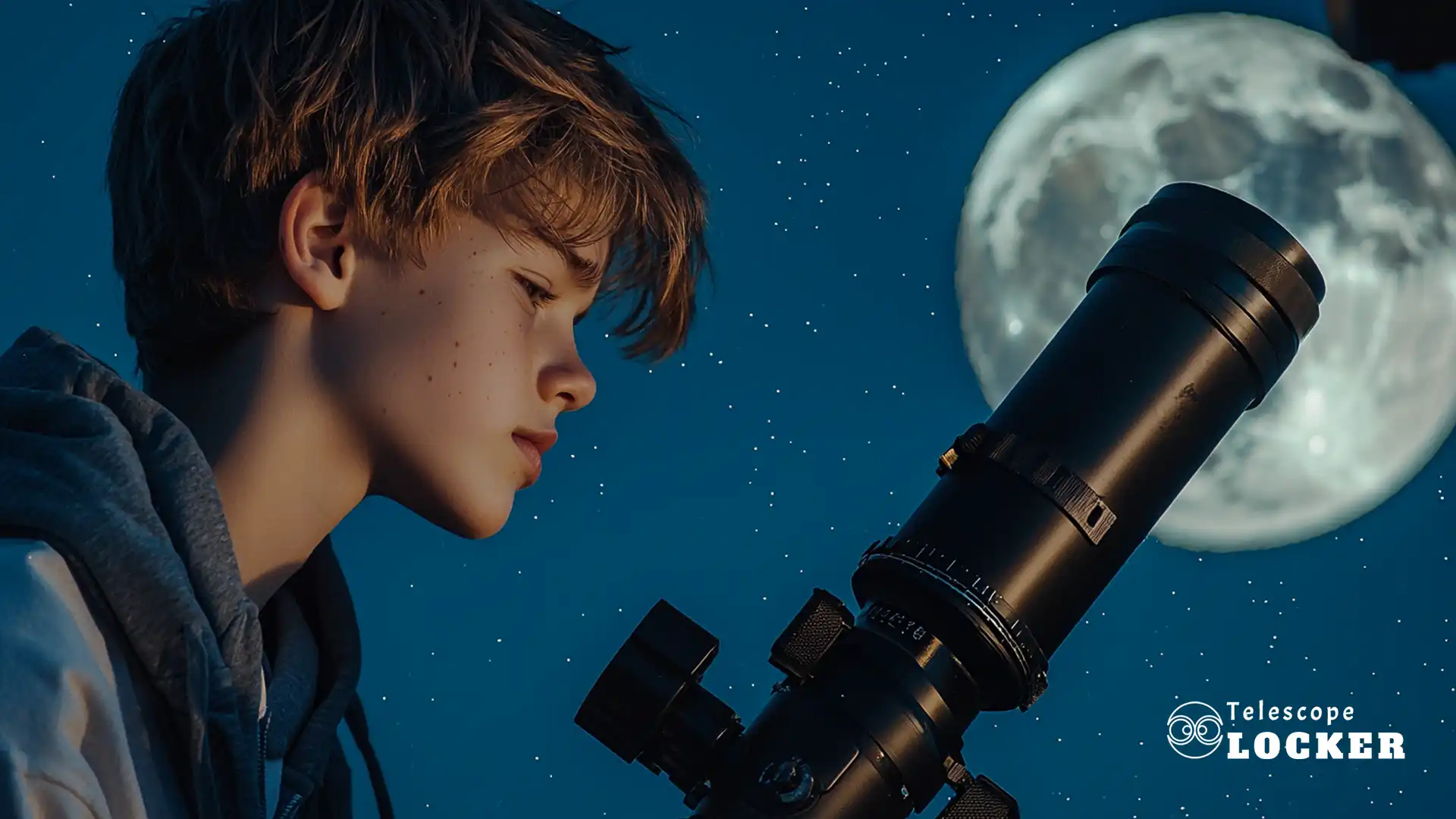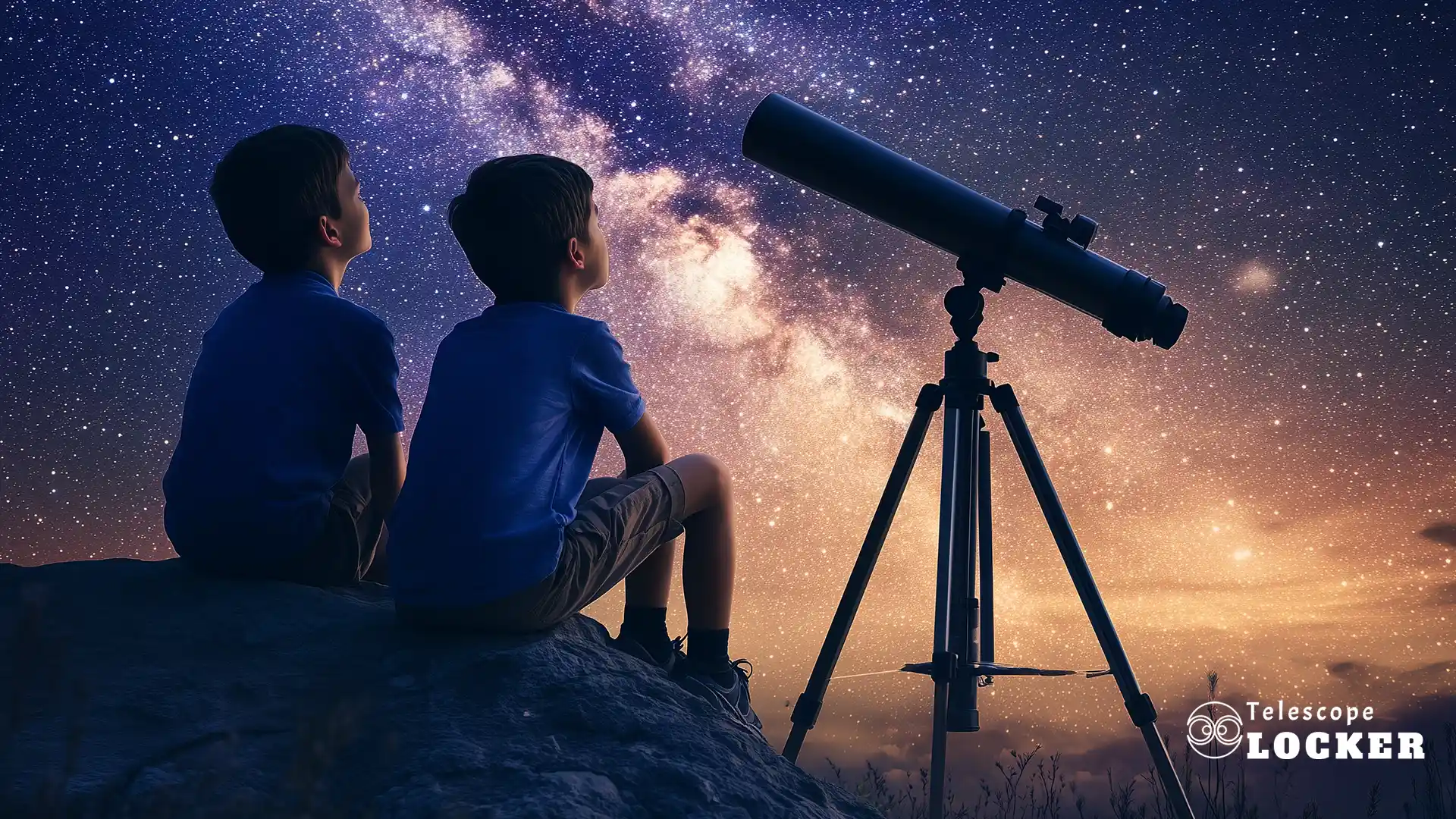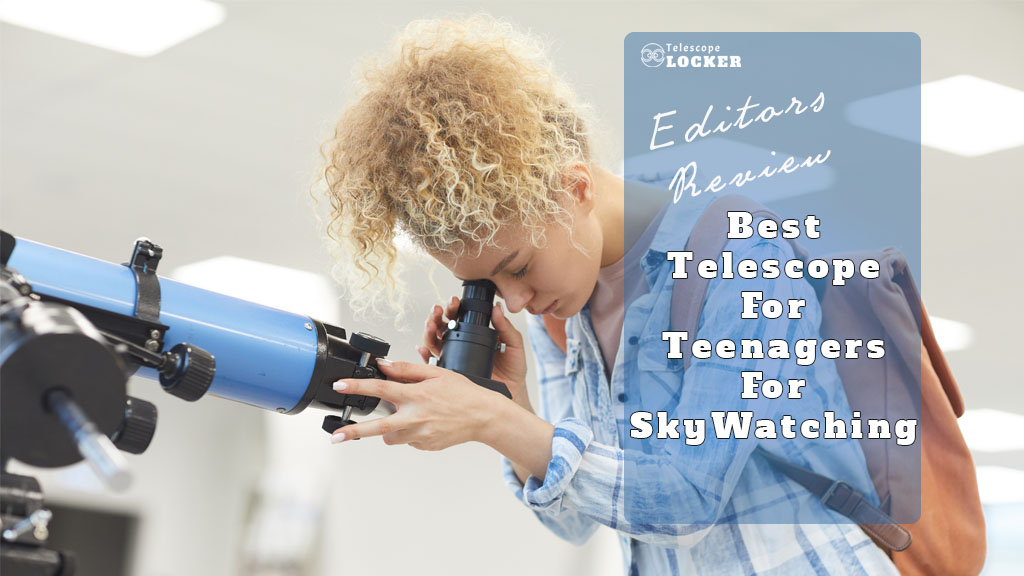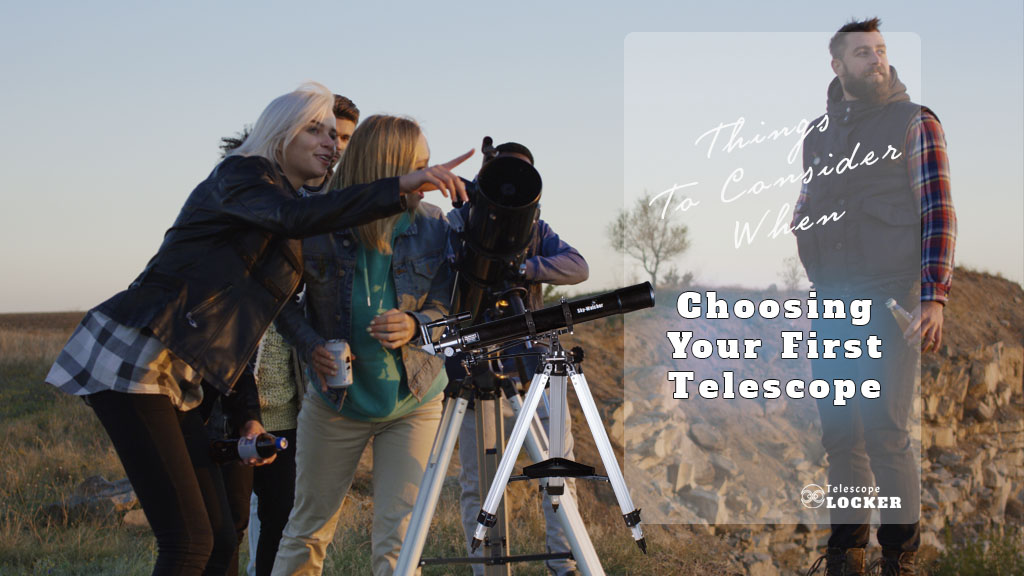Table Of Contents
A Complete Guide to Star Watching and the Best Telescopes for Teenagers
So, how to choose the best telescope for teenager, that will be simple to use, not expensive, yet will show the child the most beautiful views of the space? This guide will assist you in selecting the right telescope for your teenager, and it will address some of the most frequently asked questions that you may have.
What Makes a Telescope Suitable for Teenagers?
The purchase of a telescope for teenagers involves several factors such as portability, affordability, and good quality lenses. A model that is easy to set up enables the young and inquisitive mind to get started with the hobby without much struggle. There are such days when you spend a Saturday night under the starlit sky and the simplicity of use enables them to enjoy the craters of the moon without struggling with the complexities of the telescope.
It is also important to consider the cost as this may be a crucial factor for most families. A telescope that provides great value for the money, for instance, has several eyepieces or comes with a built-in smartphone adapter which means your teen gets to learn more without having to spend more money.
Such optics provide clear and distinct images thus providing a more rewarding viewing experience. Larger aperture telescope provides the user with an opportunity of being able to view the rings of Saturn or even galaxies such things are sure to spark interest in astronomy.
Frequently Asked Questions (FAQs)
Which Telescope Is Best for Teenagers?
The Celestron StarSense Explorer DX 130AZ is the best choice for its smart features and powerful observation.
Can Teenagers Use These Telescopes for Astrophotography?
Yes, many of these telescopes are suitable for basic astrophotography, especially with the help of smartphone adapters. When it comes to advanced astrophotography, however, it may be necessary to use other instruments.
How Much Should I Spend on a Telescope for a Teenager?
Most of the beginner level telescopes are available in the range of $100 to $400. Select a model that is within your budget and consider such factors as the aperture size and the accessories that come with it.
How Do I Maintain a Telescope?
To ensure that a telescope is in good condition it should be kept clean from dust and stored in a place that is free from dust with the lens or mirror being clean. It is recommended that you do not touch the optics directly and when cleaning use a soft brush or compressed air. It is recommended that one checks on the mount and the screws to ensure that they are well secured for stability.
What Can I See in Urban Areas?
In cities with light pollution school children can identify the brightest objectaries, the moon, Jupiter and Saturn and some star clusters. Monitoring the conditions and aiming at brighter objects is possible, which will help to have a good time.
What Questions Might Teenagers Have When Searching for a Telescope?
- What can I see with a beginner telescope?
- Are telescopes hard to set up and use?
- Can I take pictures of the stars and planets with a telescope?
- How much does a good beginner telescope cost?
- Do I need any extra accessories to start stargazing?
These questions highlight the key factors that teenagers typically consider, and we’ll address them throughout this guide.

Beginner’s Buying Guide: What Should Teenagers Look for in a Telescope?
There are a number of factors that one has to consider when selecting the best telescope for teenager and these factors make the whole process both fun and fruitful. These factors ensure a rewarding stargazing experience while keeping the process simple and engaging. Let’s explore these with real-world scenarios:
Aperture Size
That is why larger aperture is able to capture more light and thus, provides clearer images. For instance, a teenager with a 130mm telescope can be able to identify the rings of Saturn or even the details of the lunar surface which will make him or her develop more interest in astronomy.
Ease of Use
This can make the young users to get bored since they have to struggle to set it up. Go for telescopes with simple to use mounts such as an Altazimuth or the Dobsonian base. Imagine that a beginner stargazer on his or her first night with the telescope is able to freely and with ease adjust the telescope and begin to observe the craters on the moon.
Portability
These include the lightweight and the portable designs which are most suitable for the teenagers who may need to move their telescope from one place to another. Imagine a teenager, packing his or her telescope into a car and then taking it to a dark site, and then being able to see the Milky Way in a very detailed manner.
Accessories
Optical eyepieces, smartphone adapters, and finderscopes are some of the things that can help to improve the experience. For instance, a teenager using a smartphone adapter while taking pictures of Jupiter’s moons will be able to feel the joy and belonging to the space.
Additional Tips:
- Start Small: Start with an entry level telescope to see how they will react to it without having to spend a lot of money.
- Community Engagement: Urge them to participate in online discussions or astronomy clubs, thus being able to express themselves and get advice.
- Explore Technology: New technologies such as smartphone apps may help with direction and make the experience more fun especially to the youth or the tech-savvy individuals.
Thus, following the above mentioned guidelines, it is possible to choose a telescope that will suit the curiosity of a teenager and make him or her fall in love with stargazing.
Top Telescopes for Teenagers
Here is the list of the best telescopes for teenagers, their usability, features, and pros and cons are as follows:
- Celestron StarSense Explorer DX 130AZ – This is the latest and comes with some of the best optics on the market.
- Gskyer Telescope 80mm AZ – Affordable and very suitable for newbies.
- Celestron StarSense Explorer 114mm Tabletop Dobsonian Smartphone App-Enabled Telescope: Ideal for the teen who loves technology and needs a telescope that will help them find their way.
- Celestron Inspire 100AZ – Lightweight, very versatile and ideal for first-time users.
1. Why Choose the Celestron StarSense Explorer DX 130AZ?
Answer: It is the best of both worlds, a simple yet very innovative design.
The Celestron StarSense Explorer DX 130AZ is the epitome of innovative telescopes with user-friendly features that come with the use of sophisticated technology. Unlike many traditional models, this telescope has come with the StarSense app that allows the user to use the smartphone as a telescope’s rotator. For example, you can aim your telescope at the night sky and the app will tell you where to point your telescope to see various objects of interest such as the Andromeda Galaxy or Saturn’s rings; this is the kind of thing that will make teenagers fall in love with stargazing.
This is 130mm and this makes it different from others as it provides bright and clear images of planets, star clusters and deep space objects. This is because this size aperture is efficient in capturing a lot of light as compared to the smaller means scopes.
What Makes It Stand Out:
- Innovative App Integration: The StarSense app eliminates the guesswork by providing precise guidance for locating celestial objects.
- Enhanced Clarity: The large aperture enhances detail and brightness, making celestial objects vivid and engaging.
- The Altazimuth mount is quite strong and provides a very stable platform that is ideal for use over extended periods.
Pros:
- The technology-savvy design of the scope, including the ability to navigate with an app.
- Amazing image definition ideal for both the planets and the deep space objects.
- It has a durable construction to allow for regular use.
Cons:
- This makes the use of the smartphone dependent and may not be usable in areas that do not have stable connections for the devices.
- It is slightly on the expensive side as compared to the basic entry level models.
This telescope is perfect for tech-savvy teens who are ready to find out more about the universe with minimal effort while at the same time using state of the art technology to track the stars.
2. What Makes the Gskyer Telescope 80mm AZ a Great Budget Option?
Answer: It is cheap, small, and ideal for newbies who are learning how to use the telescope.
The Gskyer Telescope 80mm AZ is a good beginners’ refractor telescope that has an 80mm aperture which is enough to capture clear and clear images of the moon and the planets. It is lightweight and its Altazimuth mount makes it very portable and very simple to use.
Pros:
- Affordable Price: Great for families on a budget.
- Comprehensive Accessories: Includes multiple eyepieces and a Barlow lens.
- Easy Setup: No tools required.
Cons:
- The stability of the tripod could be improved.
- Limited for deep-sky observations.
For teenagers starting out this telescope offers excellent value without compromising on quality.
3. Why Consider the Celestron StarSense Explorer 114mm Tabletop Dobsonian Smartphone App-Enabled Telescope?
Answer: It is ideal for the tech-savvy teen who wants to have fun while learning.
The Celestron StarSense Explorer 114mm Tabletop Dobsonian Smartphone App-Enabled Telescope is a great telescope for the beginning user especially if they would like to have something that is simple to use yet has many features. It has an aperture of 114mm which makes it produce clear and distinct images of planets, star clusters, and even far away galaxies. This comes in handy in pointing the telescope to various celestial objects as the phone’s screen makes it easy to find your way around.
Pros:
- User-friendly smartphone app for easy navigation.
- It is a large aperture size (114mm) and will therefore yield detailed views.
- The table-top configuration provides a steady working surface and hence the setup is highly transportable.
Cons:
- This telescope has to be paired with a smartphone to work with the app.
- Not as portable as compact models.
This telescope is ideal for teens who require a simple and modern approach to stargazing, in a way making the experience more of a journey.
4. What Sets the Celestron Inspire 100AZ Apart?
Answer: It is light-weight, very versatile and very much suitable for a beginner.
The Celestron Inspire 100AZ is a refractor telescope which is quite easy to use and comprehend. It is equipped with 100mm aperture through which it is capable of delivering clear and crisp images; the optics of the telescope is made of fully coated glass to improve the image quality. The telescope also features a built-in smartphone adapter to help the users try their hand at astrophotography.
Pros:
- Ideal for viewing the surface of the moon and the planets.
- Smartphone Adapter: Quite useful for the new users who are interested in the astrophotography.
- Compact and Portable: It is very light and easy to move and put in a car or store away.
Cons:
- Largely ineffective for high-end deep-space scanning.
- The tripod could have been more stable.
This telescope is ideal for the teenagers who are in the market for an all-round telescope that is simple to use.
You can check this Telescope out on Amazon here.

What to Expect When Using a Telescope for the First Time
It is rather interesting and inspiring to use a telescope for the first time, but it can also cause stress. There are many things that you have to know, but with the information given in this article, you will be able to observe the starlit sky. Here is what you should expect as you start your journey of using a telescope for the first time.
1. Setting Up Your Telescope
Even before you attempt to peer through the eyepiece, you have to first put in place your telescope. Don’t worry this is because most of the beginner telescopes are very easy to assemble. You’ll start by putting together the main components: The parts that we are likely to use include the tripod, the mount and the optical tube.
Mounting: Place the telescope on its mount (the mount can be in form of a tripod or a stronger one depending on the type of telescope). Some telescopes may need some adjustments to make sure that the mount is well placed.
Adjusting the Eyepiece: Most of the telescopes come with different eyepieces which can be changed depending on the object that the user wants to observe. For a beginner, it is advisable to use low magnification to sight on objects that are far away such as the moon or the planets.
2. Finding Your First Object: The Moon
Another good thing about using a telescope for the first time is that you get to see a phenomenon as magnificent as the moon. It is bright, easy to locate and still contains a lot of surface pattern, which is visible even for a novice.
Using the Finder Scope: In case your telescope possesses a finder scope a small optical tube that is used to point out an object in space, then use it to point at the moon. To point both the finder scope and the main telescope to one object, you have to look through the finder scope and then move it to and fro to make both point to the same object.
Focus: After you have aimed the telescope towards the moon, then you are now ready to observe by looking through the ocular and regulating the focus. This is because one may have to adjust the focus several times before the image in the viewing screen is properly and sharply focused.
3. Expect Some Trial and Error
When you are just starting out, there are usually some mistakes that one makes in order to perfect on it. It is quite natural that one tends to feel that the object is not exactly in the center or the image is not very crisp.
Common Challenges: They include; struggling to pick out dim objects, or noticing that the images are not very sharp. This is the case when the telescope is slightly out of perpendicular or when it is not pointed at the right area.
How to Fix It: Be patient. Operate the telescope slowly and steadily until and unless the object comes into view. If the image is fuzzy then either rotate the focus wheel or change the eye piece with lower magnification to have clear vision.
4. Expect to Adjust Your Position
When you are using your telescope it is not uncommon to have to change your position rather frequently so that the object remains in view. Most telescopes are usually fitted with either an Altazimuth or an Equatorial mount.
Altazimuth Mount: This type of mount allows you to move the telescope up and down as well as left and right. It might be necessary to make tiny adjustments because the Earth’s rotation causes your object to drift out of view.
Equatorial Mount: This mount follows the path of the Earth and thus helps you to view an object for a longer duration especially useful when you are planning to watch the stars for a long time.
5. Exploring the Night Sky
Once you get the hang of using the telescope, you can begin exploring other objects in the sky. While the moon is always a great place to start, there are many other incredible sights that are visible to beginner telescopes users.
Planets: With a basic telescope, you can easily spot planets like Jupiter and Saturn. You may even be able to make out Saturn’s iconic rings, which is a thrilling experience for any stargazer.
Stars and Constellations: In order to identify the constellations, it is advisable to use a star map or an astronomy application on your phone. Some of the telescopes have finder app that can take you to various interesting objects this is a good way of learning the map of the night sky.
6. Capturing Your Experience
If you want to practice astrophotography, most of the modern telescopes include a smartphone adapter that enables you to take photos of the object through the eyepiece. This is a perfect way of saving the memory of your time on the observation and, perhaps, showing it to your friends or publish it on social networks.
- Astrophotography Tips: It is better to start with the shooting of bright objects, for instance, the moon or the planets since they are easy to capture. Use apps designed for astronomy to help you track your subject and get the best photo.
7. Enjoying the Process and Learning More
Using a telescope for the first time is just the beginning of a long journey. The more you go for stargazing the more you become familiar with the processes of focusing, identifying objects and exploring new areas of the sky.
Patience Is Key: It is not always easy to become an expert in your telescope, but that is fine. Each time you try is an opportunity to master something new about the world.
Join a Community: It is advisable to join the astronomy forums on the internet or stargazing clubs in your area. These people can assist, encourage and support you as you advance in your stargazing endeavors. I have listed some worthy places in the next section below.
8. Keep Looking Up
Using your telescope for the first time in the night will not be perfect but it will be fun. The whole process comes down to the fact that one should enjoy the time spent observing the space, get curious, and keep on looking up. Every time you peer through the lens, you are coming closer to understanding the universe. So, never stop exploring and always remember that the stars are always there for you to find.
Some Online Communities To Check Out
1. Cloudy Nights Astronomy Forums
- Website: Cloudy Nights
- Description: Cloudy Nights is a popular online community for amateur astronomers. They have forums dedicated to different aspects of astronomy, including telescopes, astrophotography, and observational tips. While not specifically for teenagers, it is a great place to find guidance and connect with experienced stargazers.
2. Reddit (r/astronomy, r/telescopes, r/astrophotography)
- Website: Reddit Astronomy
- Description: Reddit has a wealth of astronomy-related subreddits, including those focused on telescopes, astrophotography, and general astronomy discussion. These communities welcome people of all ages, and many younger enthusiasts share their experiences and ask for advice on various telescopes and astronomical phenomena.
3. Astronomy Club Youth Groups
- Website: Search for local or regional astronomy clubs.
- Description: Many local astronomy clubs have youth programs or online forums where younger members can learn and engage in astronomy-related activities. These groups often have special events for young stargazers and even mentorship opportunities.
4. NASA’s Online Community
- Website: NASA for Students
- Description: NASA offers educational resources, virtual events, and community engagement opportunities for students and young people interested in space science and astronomy. They have outreach programs and even ways for teens to connect with professionals in the field.
Final Thoughts: Which Telescope Should You Choose?
All the telescopes reviewed here have their specific features that make them suitable for different persons. The Celestron StarSense Explorer DX 130AZ and the Celestron StarSense Explorer 114 Tabletop Dobsonian shines with its innovative app integration, which will be perfect for the tech-oriented teenagers who want to observe the sky with the help of an easy to use app. If you are a family that wants to save some money, then the Gskyer Telescope 80mm AZ is a perfect choice because it is affordable and comes with many features. Finally, the Celestron Inspire 100AZ is a versatile and compact telescope which is perfect for teenagers who are interested in both astrophotography and stargazing.
By listing these features, it is possible to help the teenager find the right telescope that will interest them and make them want to learn more about the universe.
Selecting the best telescope for a teenager depends on their interests and level of experience. Whether it’s the tech-savvy Celestron StarSense Explorer DX 130AZ or the budget-friendly Gskyer Telescope 80mm AZ, each option provides a unique gateway to exploring the cosmos. Telescopes are a great way to introduce your child to the world of astronomy and help them discover their passion for space.
Affiliate Disclosure
This page contains affiliate links. As an Amazon Associate, I earn from qualifying purchases. I also earn commissions from other affiliate programs. These links help support my website at no additional cost to you and allow me to continue creating valuable content for my readers.
For more information about affiliate guidelines, you can visit paidforadvertising.com.
Thank you for your support!



